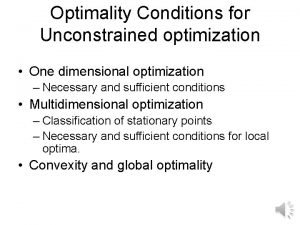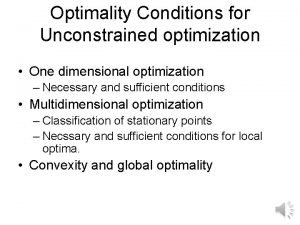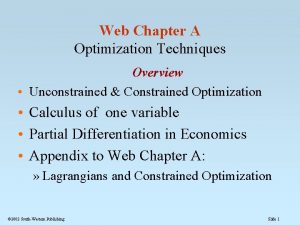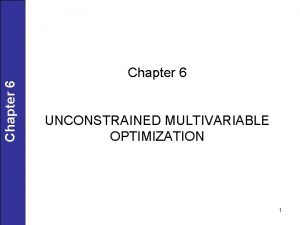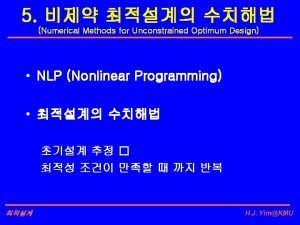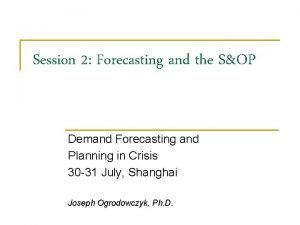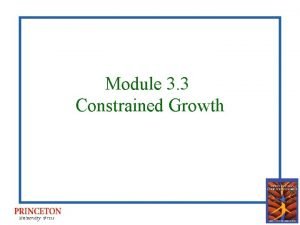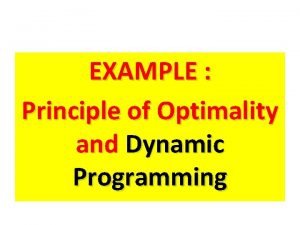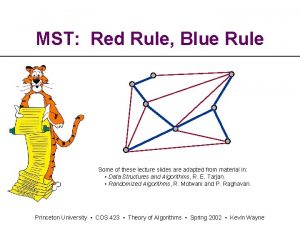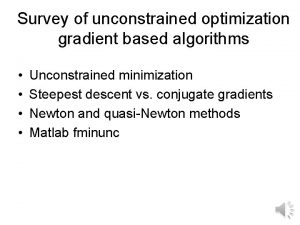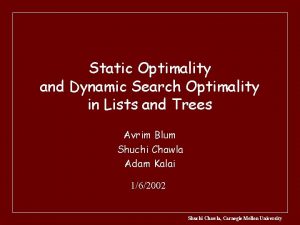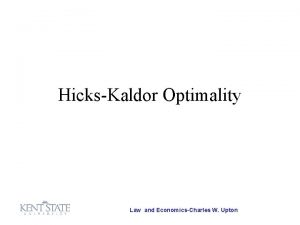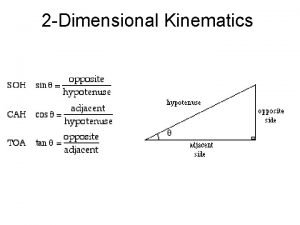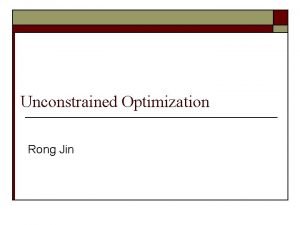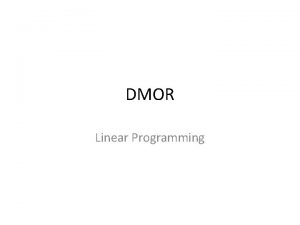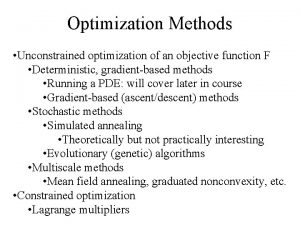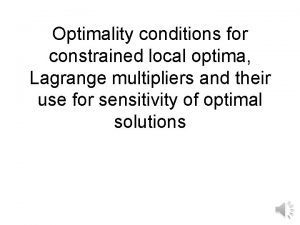Optimality Conditions for Unconstrained optimization One dimensional optimization
















- Slides: 16

Optimality Conditions for Unconstrained optimization • One dimensional optimization – Necessary and sufficient conditions • Multidimensional optimization – Classification of stationary points – Necessary and sufficient conditions for local optima. • Convexity and global optimality

One dimensional optimization • We are accustomed to think that if f(x) has a minimum then f’(x)=0 but….

1 D Optimization jargon • A point with zero derivative is a stationary point. • x=5, Can be a minimum A maximum An inflection point

Optimality criteria for smooth 1 D functions at point x* • f’(x*)=0 is the condition for stationarity and a necessary condition for a minimum or a maximum. • f“(x*)>0 is sufficient for a minimum • f“(x*)<0 is sufficient for a maximum • With f”(x*)=0 needs information from higher derivatives. • Example?

Problems 1 D • Classify the stationary points of the following functions from the optimality conditions, then check by plotting them 1. 2. 3. 4. 2 x 3+3 x 2 Solution 3 x 4+4 x 3 -12 x 2 Solution X 5 Solution f=x 4+4 x 3+6 x 2+4 x Solution • Answer true or false: Solutions in the notes page. – A function can have a negative value at its maximum point. – If a constant is added to a function, the location of its minimum point can change. – If the curvature of a function is negative at a stationary point, then the point is a maximum.

Taylor series expansion in n dimensions • Expanding minimum x* about a candidate • This is the condition for stationarity

Conditions for minimum • Sufficient condition for a minimum is that • That is, the matrix of second derivatives (Hessian) is positive definite • Simplest way to check positive definiteness is eigenvalues: All eigenvalues need to be positive • Necessary conditions matrix is positive-semi definite, all eigenvalues non-negative

Types of stationary points • • • Positive definite: Minimum Positive semi-definite: possibly minimum Indefinite: Saddle point Negative semi-definite: possibly maximum Negative definite: maximum

Example

Problems n-dimensional • Find the stationary points of the following functions and classify them: Solution

Global optimization • The function x+sin(2 x)

Convex function • A straight line connecting two points will not dip below the function graph. • Convex function will have a single minimum. Sufficient condition: Positive semi-definite Hessian everywhere.

Problems convexity • Check for convexity the following functions. If the function is not convex everywhere, check its domain of convexity. See notes page Solution

Reciprocal approximation • Reciprocal approximation (linear in one over the variables) is desirable in many cases because it captures decreasing returns behavior. • Linear approximation • Reciprocal approximation

Conservative-convex approximation • At times we benefit from conservative approximations • All second derivatives of f. C are non-negative • Called convex linearization (CONLIN), Claude Fleury

Problems approximations 1. Construct the linear, reciprocal, and convex approximation at (1, 1) to the function 2. Plot and compare the function and the two approximations. 3. Check on their properties of convexity and conservativeness. Solution
 Optimality conditions for unconstrained optimization
Optimality conditions for unconstrained optimization Optimality conditions for unconstrained optimization
Optimality conditions for unconstrained optimization Unimodal function
Unimodal function Constrained and unconstrained optimization in economics
Constrained and unconstrained optimization in economics Unconstrained multivariable optimization
Unconstrained multivariable optimization Single seed descent
Single seed descent Fminsearch
Fminsearch Circular motion is one dimensional or two dimensional
Circular motion is one dimensional or two dimensional What is optimality principle in computer networks
What is optimality principle in computer networks Unconstrained demand
Unconstrained demand What is optimality principle in computer networks
What is optimality principle in computer networks Unconstrained growth
Unconstrained growth Unconstrained decay
Unconstrained decay Optimality principle in dynamic programming
Optimality principle in dynamic programming What is optimality principle in computer networks
What is optimality principle in computer networks A* optimality proof
A* optimality proof Blue rule
Blue rule
